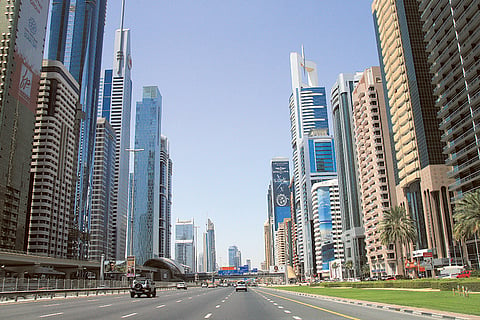Where Dubai rents will rise next and where they are likely to cool with new supply coming in
Prime districts to lead gains while new supply steadies mid-market rents.

Dubai: Dubai’s rental market is set to enter a phase of steady growth, with new and well-connected districts taking the lead while some older communities see rent stabilisation. The city’s appeal as a long-term residential destination remains undimmed, but the pace of increases is expected to normalise after two years of rapid escalation.
“Areas such as Dubai Hills Estate, Business Bay, Dubai Marina, Downtown Dubai, and Al Wasl will continue to attract tenants looking for modern living with proximity to employment hubs,” said Rui Liu, Chairman and Founder of LEOS Developments.
These locations have retained their edge thanks to their mix of lifestyle appeal and access to core districts like DIFC and Dubai Internet City. Liu noted that accessibility will remain a key factor driving tenant decisions, not speculative hikes. “The key driver remains accessibility, both in terms of price and commute time,” he said.
Newer communities building momentum
In the affordable segment, areas such as JVC, Arjan, and Dubai South are expected to see steady gains as handovers pick up and infrastructure matures. These emerging districts are offering newer, well-designed homes at prices that still undercut the city’s core areas, creating a natural pull for young professionals and families.
At the same time, established communities such as Dubailand and Dubai Sports City are set to benefit from ongoing handovers that will ease pressure in nearby mid-market areas. “The continued delivery of new units in master-planned areas like Dubailand, JVC, and Dubai Sports City will help ease pressure on certain sub-markets,” Liu said.
Cooling in oversupplied pockets
Not every district will see rents climb. According to Liu, some affordable zones could experience slower growth as more stock comes online.
“Communities with abundant upcoming handovers and limited differentiation will see slower rental appreciation,” he said, pointing to International City and parts of Discovery Gardens and Dubai Silicon Oasis.
These markets cater to price-sensitive tenants who tend to relocate when rents rise, limiting landlords’ room to push further. Increased competition among landlords is likely to stabilise or even soften rents in these sub-markets.
Villas and townhouses continue to attract families
“Dubai is increasingly evolving into a family-focused destination, where residents prioritise space, privacy, and access to green, community-oriented environments over high-rise apartment living,” Liu said.
That shift has helped sustain momentum in villa communities, even as apartment rents begin to stabilise. Liu added that Dubai’s population growth, combined with its reputation as a stable investment hub, will continue to support the broader market. “This trend is further supported by the UAE’s progressive visa reforms, which encourage long-term residency,” he said.
New supply to bring balance, not a drop
Looking ahead, the wave of new supply expected through 2025 and 2026 is likely to keep the market competitive without causing sharp corrections.
“The wave of new supply expected in 2025–2026 will introduce healthy competition, especially in the apartment segment,” said Liu. “While headline rents may not drop sharply, landlords of older or less well-maintained buildings will need to moderate rent increases to retain tenants.”
In his view, quality will be the main differentiator in a maturing market. “Developers who focus on quality construction, design, and community experience will remain resilient even as supply levels normalise,” he said.
For tenants, that means more choice. For landlords and developers, it means a market where well-built, well-connected properties will continue to define Dubai’s rental segment.
Sign up for the Daily Briefing
Get the latest news and updates straight to your inbox


